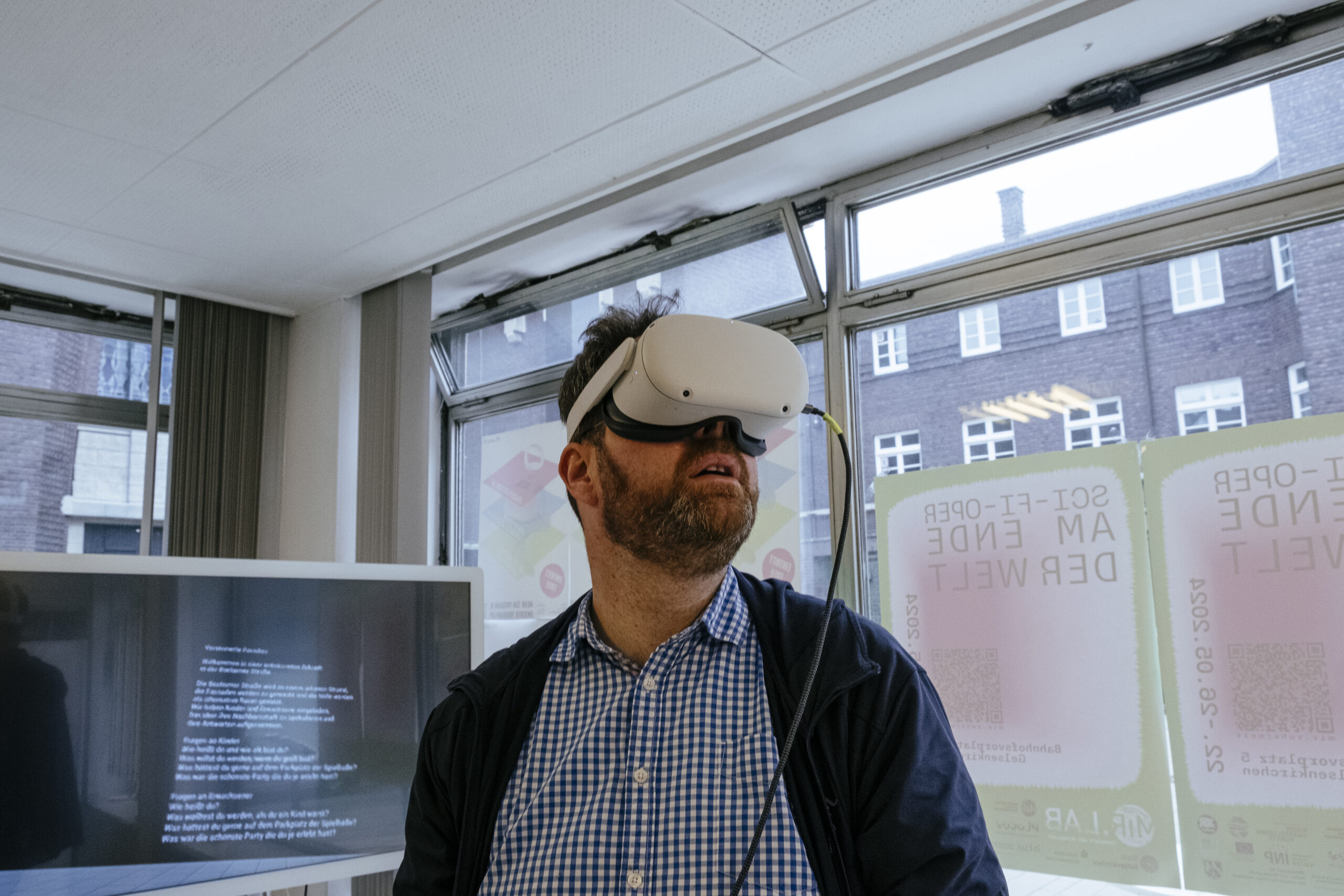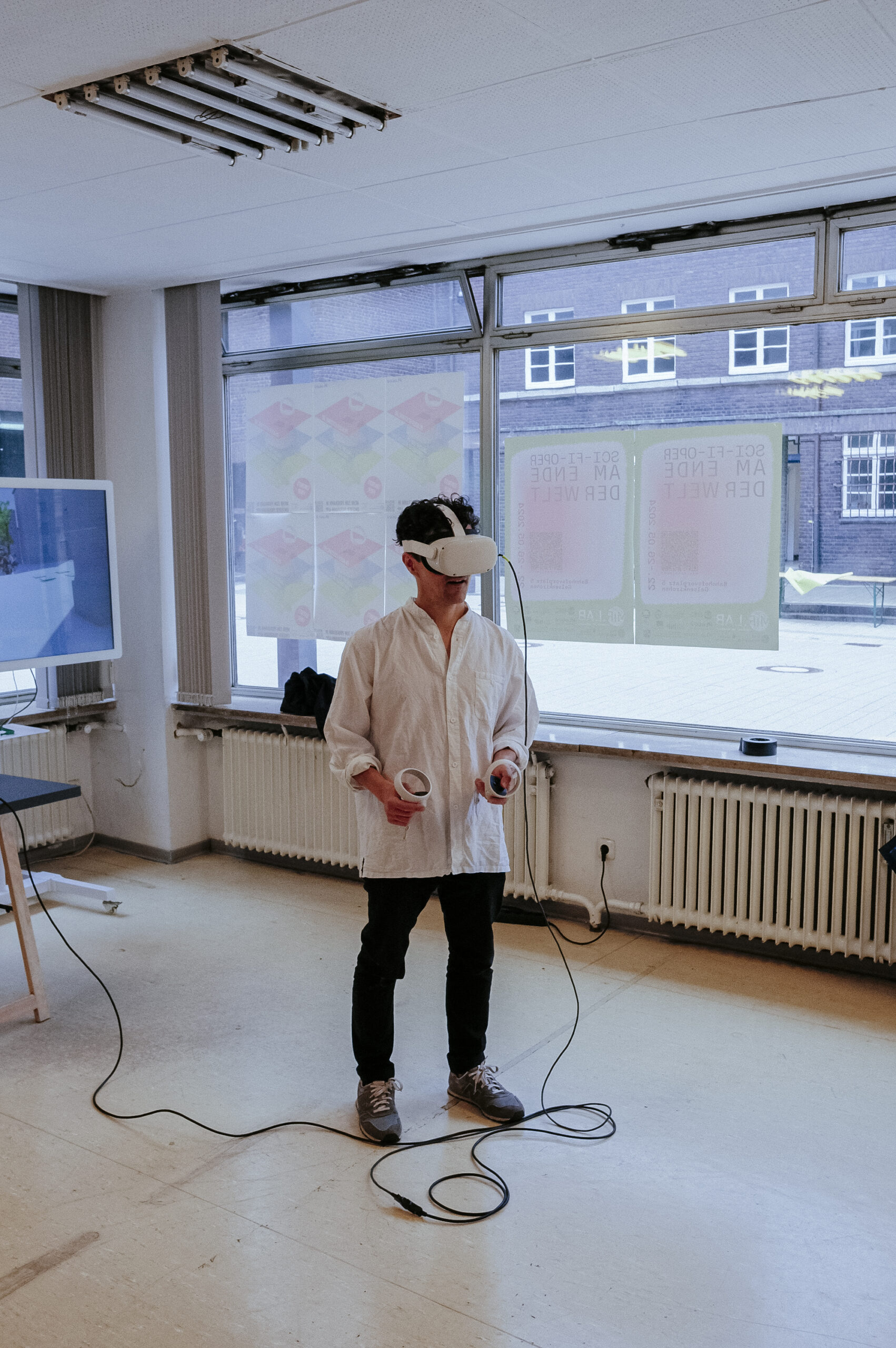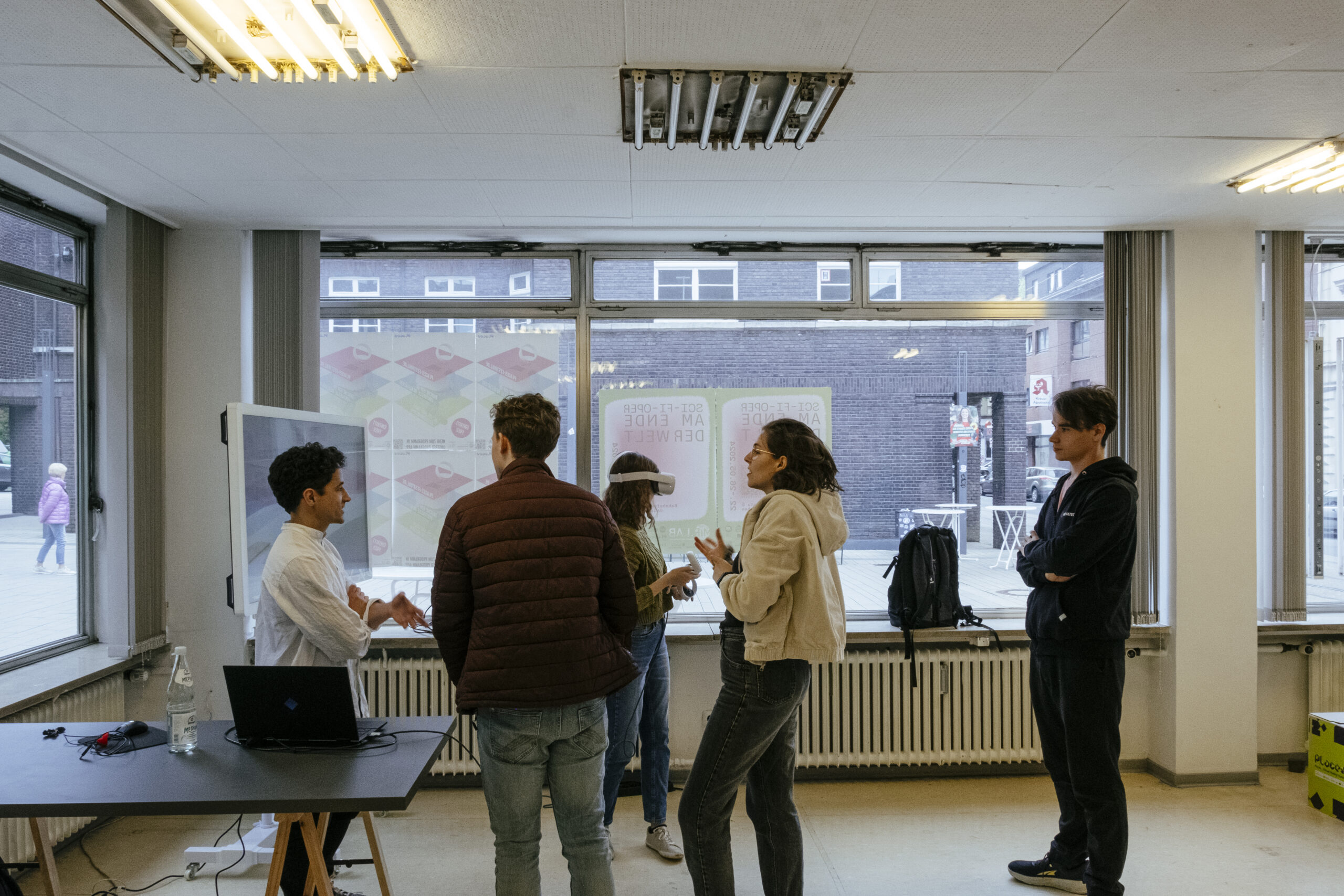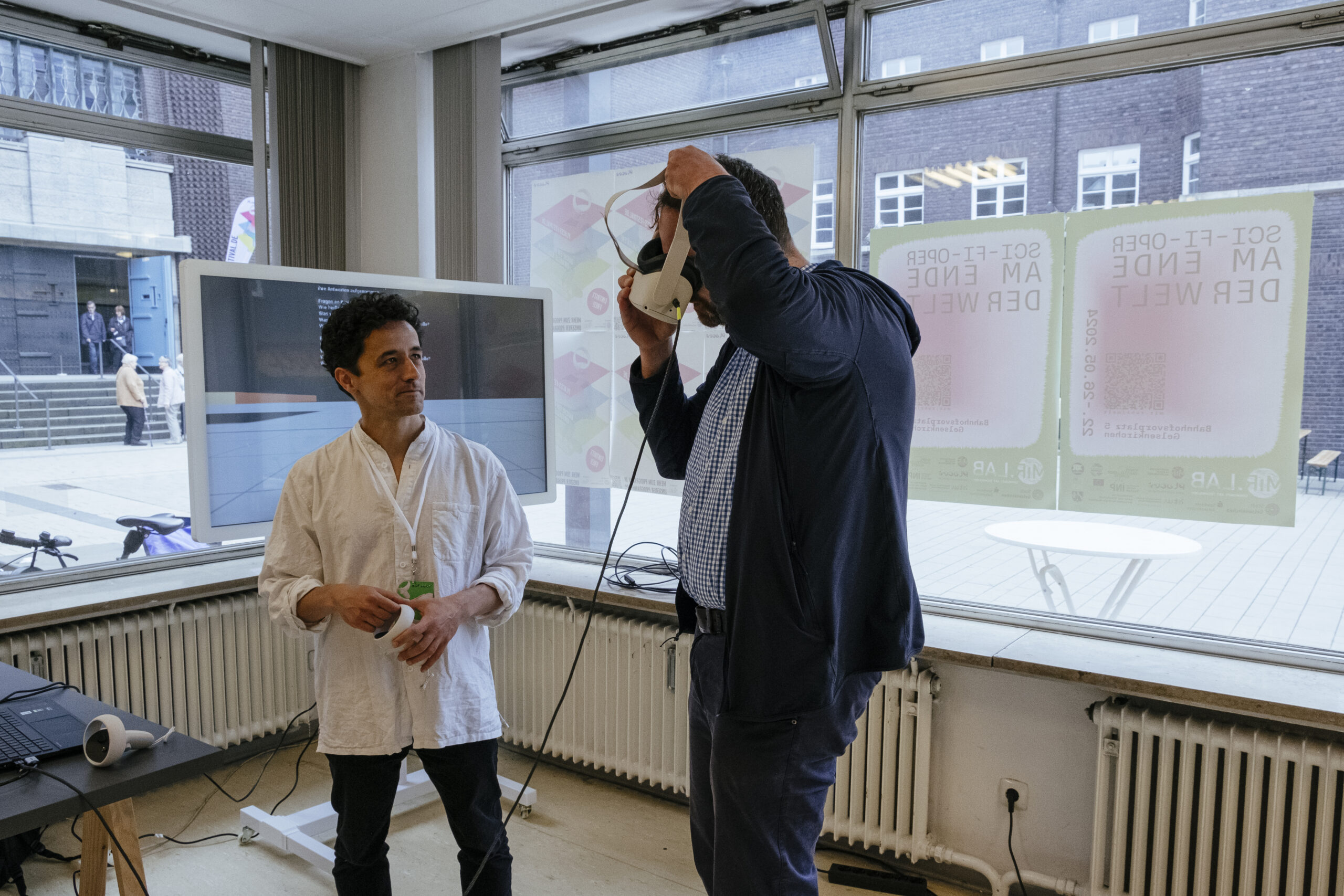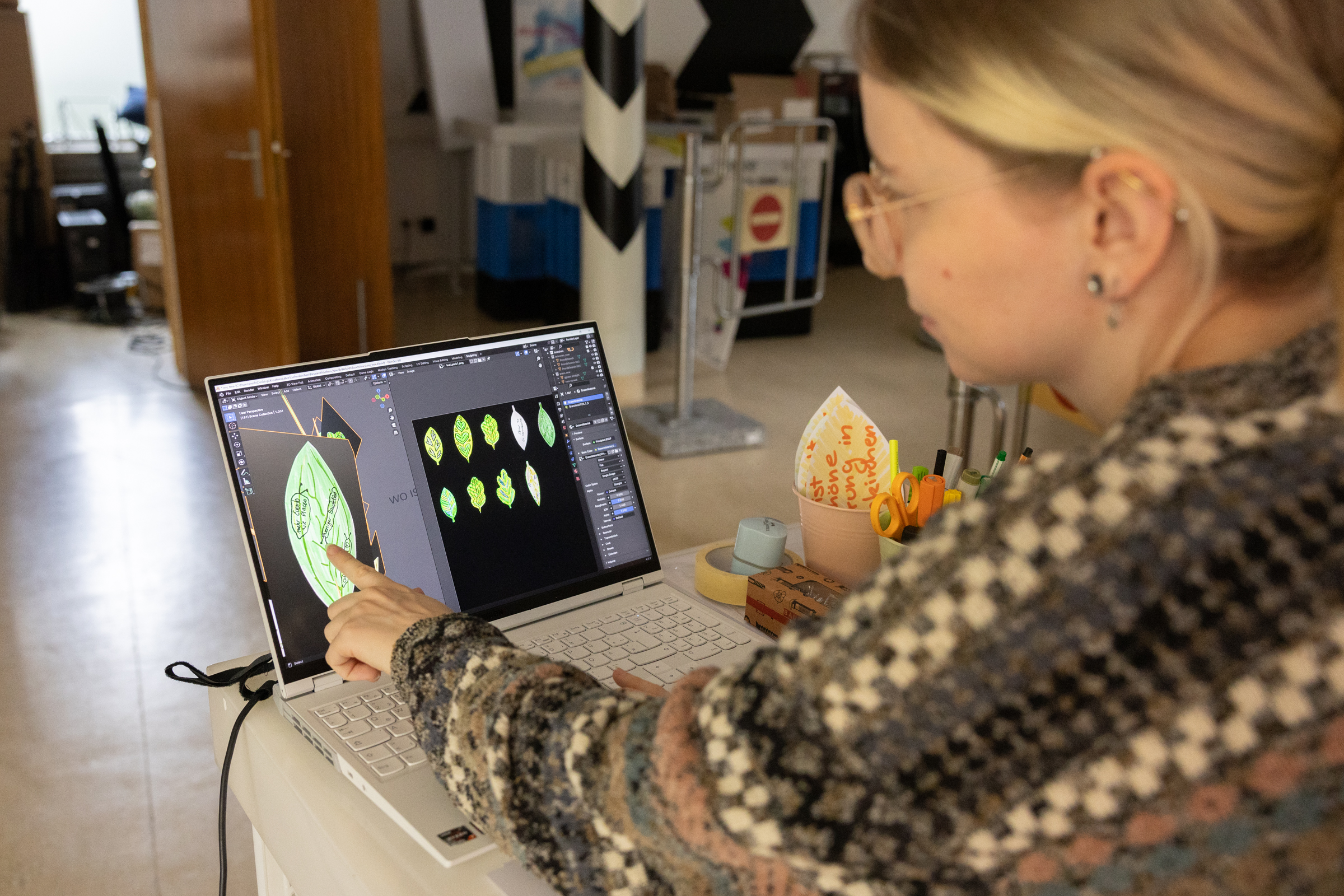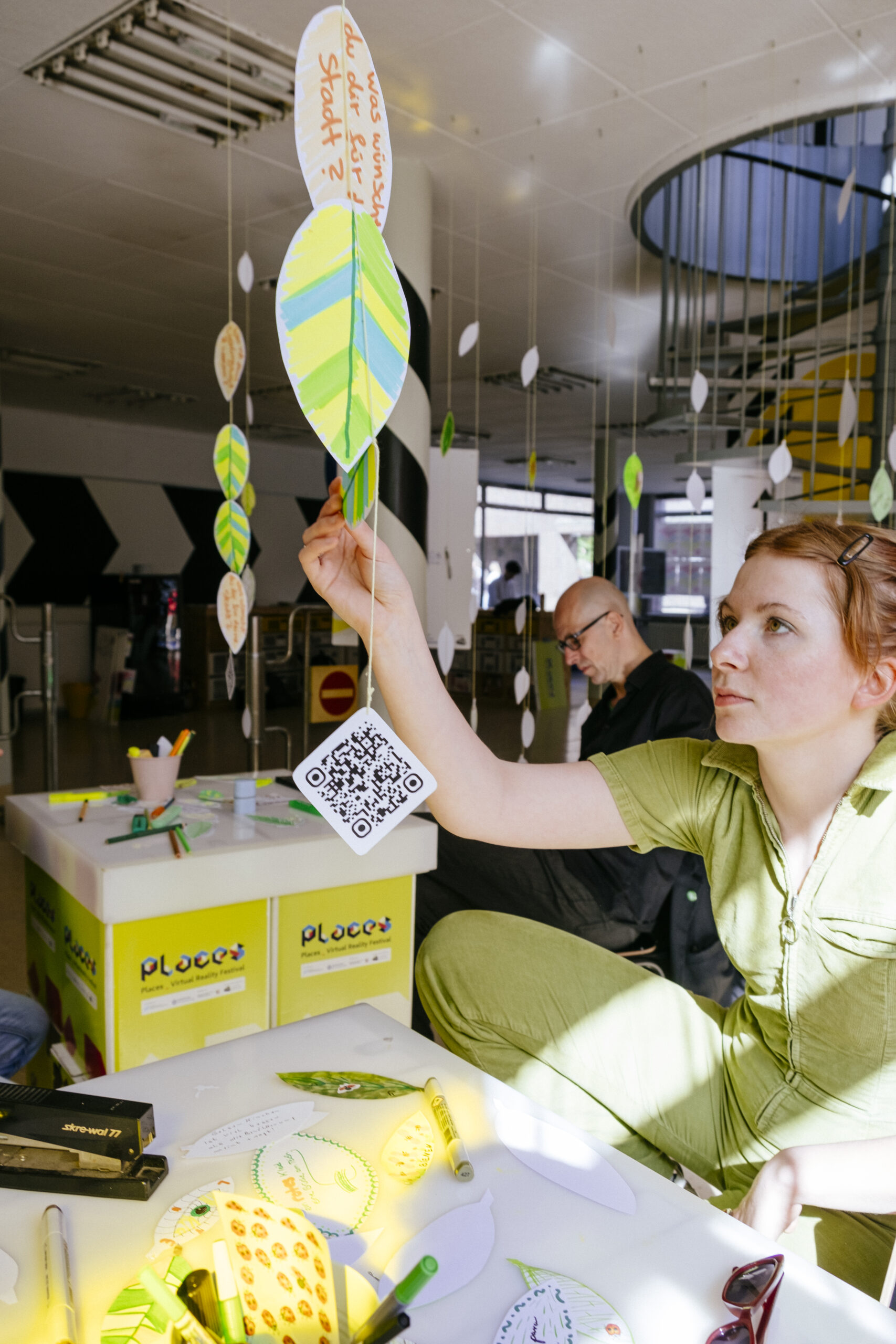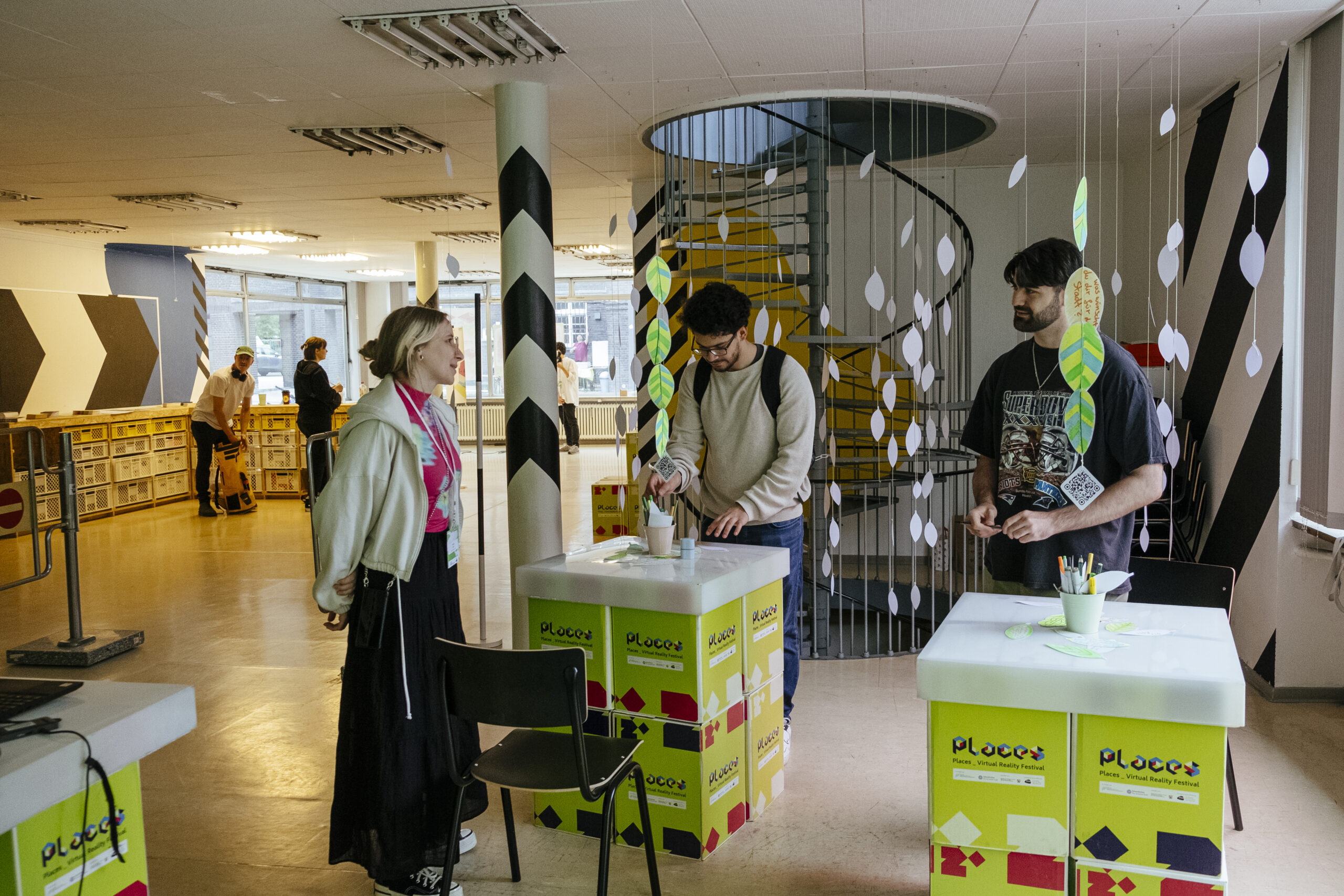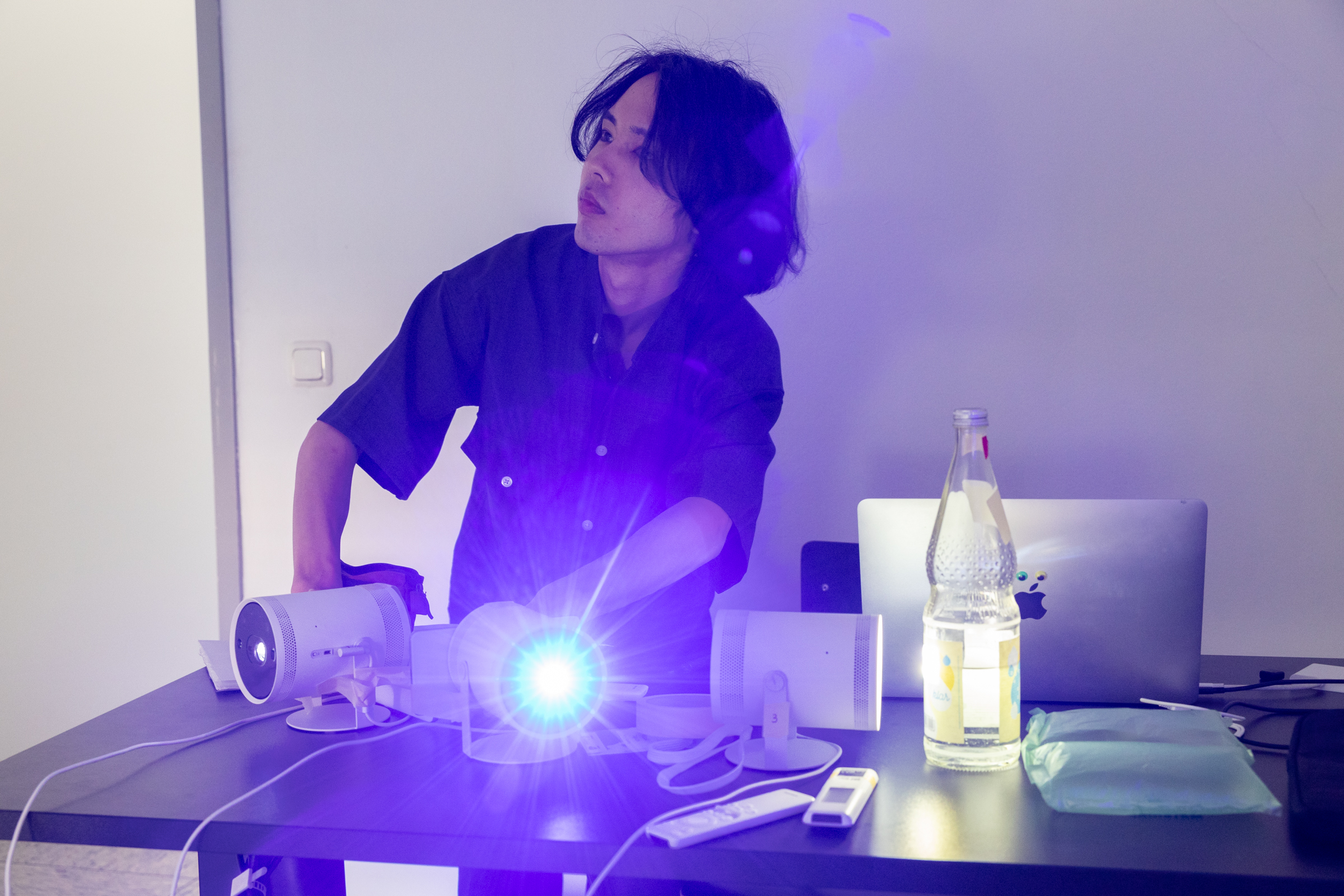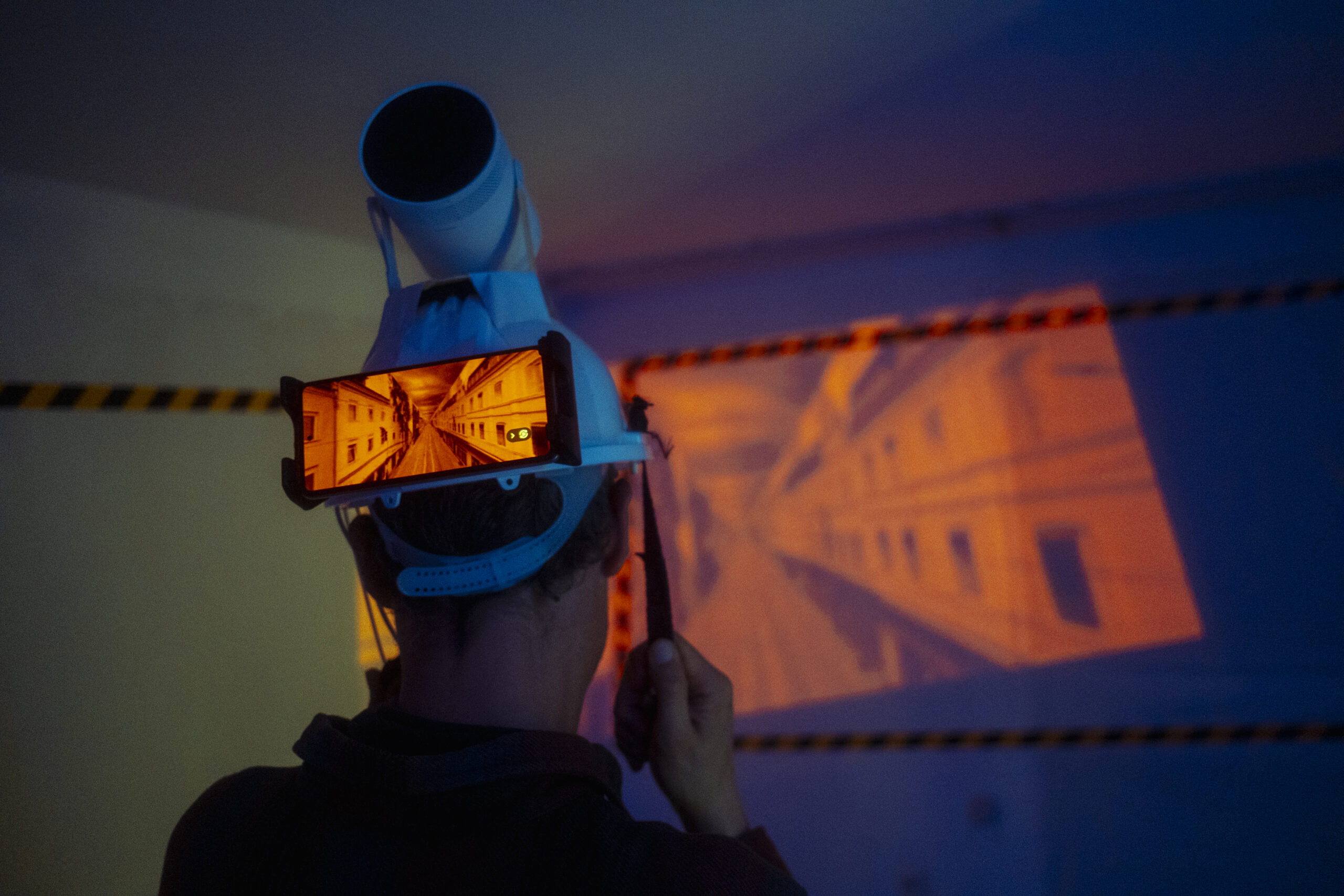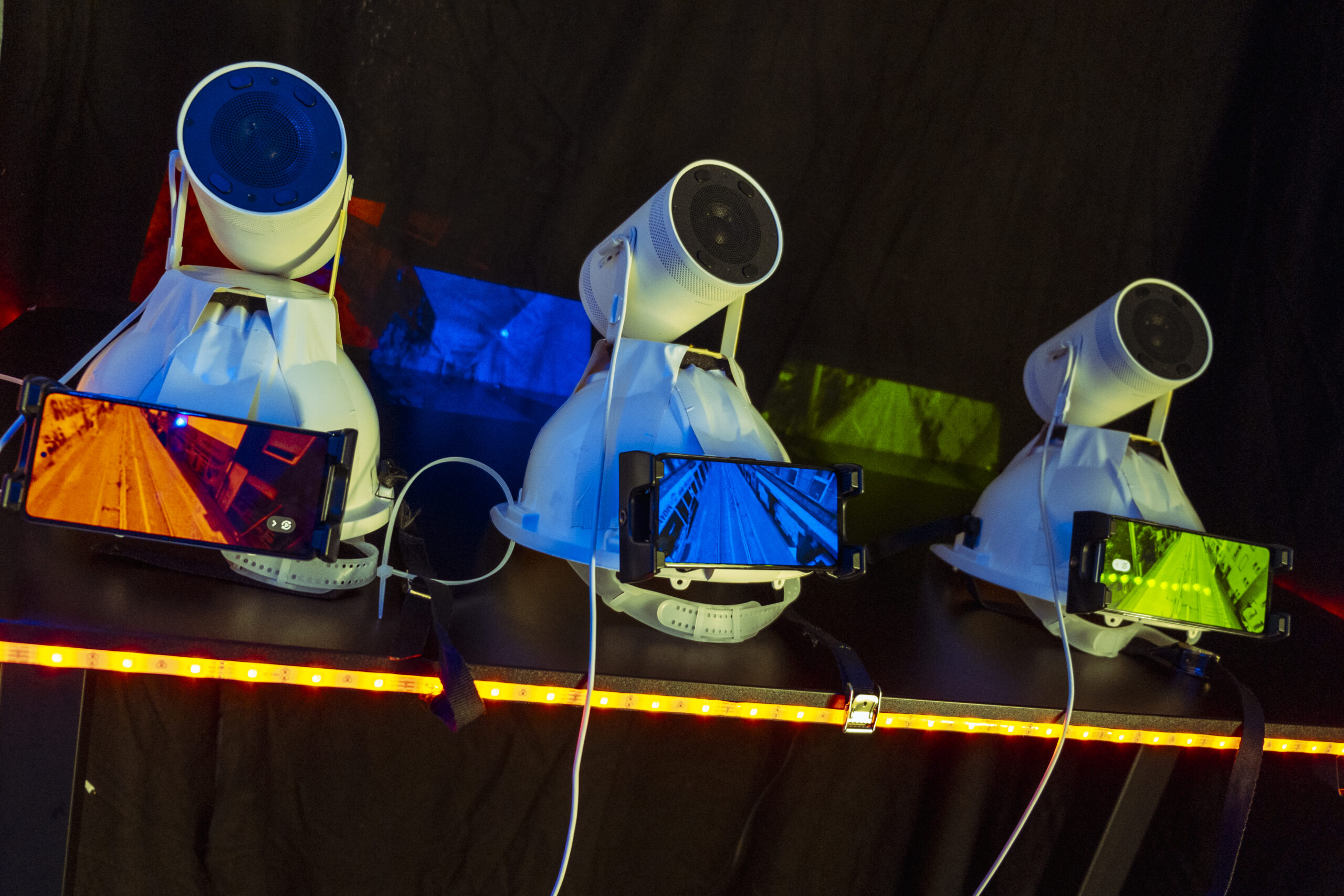Versteinertes Paradies

Manuel Riberio, an architect from Münster with Portuguese roots, took visitors to the Places Festival on a journey through an alternative version of Bochumer Straße in his virtual reality application. He not only created this virtual image of Bochumer Straße using a computer, but also used Gaussian splatting technology to create a 3D version of the district with the help of real video recordings.
The VR version of “Bochumer”, as the locals call it, exudes a Mediterranean flair with its lime-colored houses to the left and right of the roadway, just as the artist knows it from his own homeland and imagines the home of the first generation of immigrants. His artwork was inspired by the highly dynamic nature of the neighborhood, the simultaneous social difficulties and the very diverse composition of the residents.
Where the streetcar tracks normally run, a blue river meanders down the street – users can follow it. On some buildings, they will find interactive elements that actually invite them to play a little game in virtual reality. This gives visitors the opportunity to “pull the street to the left”, so to speak. The backyards move to the street, the facades recede – and fictional scenes can then be explored immersively in VR in the courtyards of Bochumer Straße.
Gewächs aus Gelsen
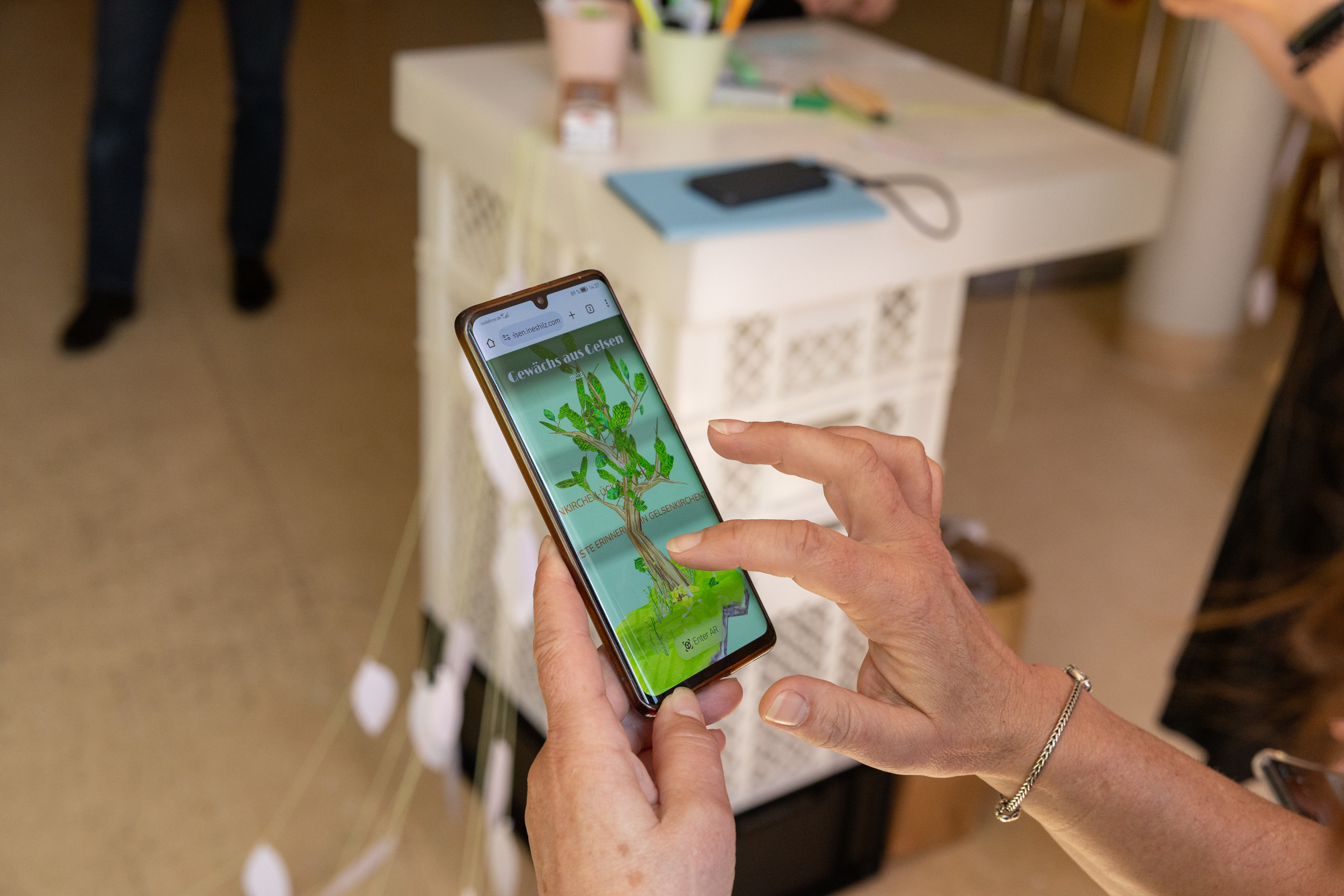
With her augmented reality artwork “Gewächs aus Gelsen”, which is based on the idea of the Japanese wishing tree, Berline XR designer Ines Hilz has created an interactive artwork for the Places Festival that combines analog and digital elements. She was inspired by the creative will of the people in the district and their simultaneous focus on the future, which she noticed during her visit to the creative quarter in April.
Visitors can actively help shape the digital tree by writing their wishes and ideas for the city of Gelsenkirchen on one of the leaves with a pen – in completely analog form. What is your favorite place? What do you miss in Gelsenkirchen? What do you wish for the future of your city? These and other questions inspire visitors to capture their personal wishes for the future on the sheets of paper on display. The individual leaves are then digitized with a smartphone camera and hung on the digital tree by the artist, which can be admired as a digital sculpture in augmented reality in any room.
With every wish and every idea, the wish tree in AR grows a little more. However, it can not only be seen in AR, but also on its own website. This means that the tree is not only accessible worldwide as a piece of Ückendorf – everyone who has helped to shape the collective work of art can share their wish and all other wishes just as quickly and easily with the whole community.
Unearthing the Tale
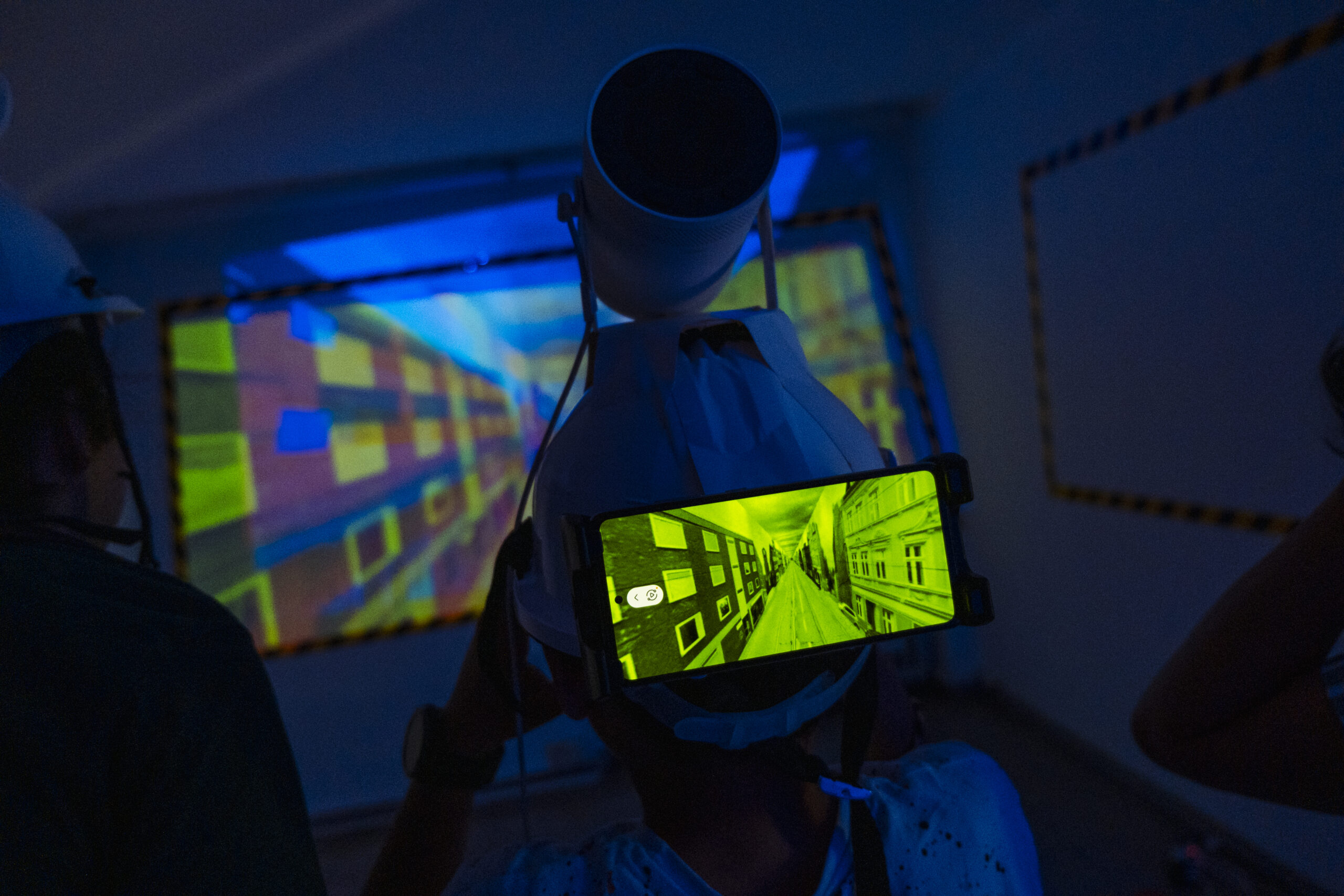
The digital artist Kazuki Taguchi, who comes from Japan and lives in Saarland, presented a mapping experiment at the Places Festival in which three visitors each become an individual projector. In terms of content, Kazuki was inspired by the stories of Corpus Christi processions on Bochumer Straße. As with the traditional procession, his artwork entitled “Unearthing the Tale” is about walking a path together, heading in the same direction.
The three visitors have to work together and adjust their respective perspectives to see the entire projection in all its colors. Each of them wears a projector on their head, with which they project the same image – only in different colors – onto the walls. As they turn their heads, the viewing angle of each image changes. The vection effect plays a special role in the installation, enhancing the immersion of what is essentially a simple AR application. It creates the impression that the participants themselves are moving through the Bochumer Straße. In this way, people are on their way together – just as the Corpus Christi procession was many decades ago.

